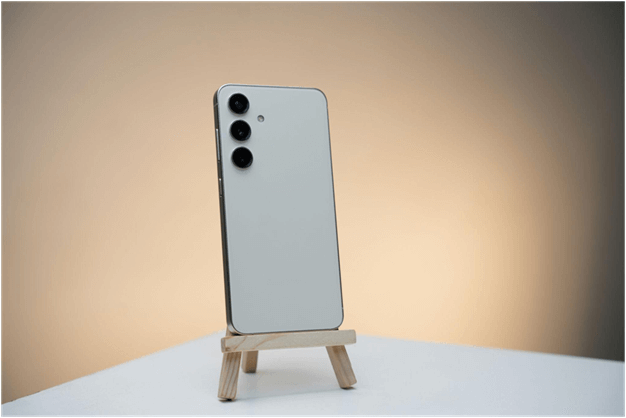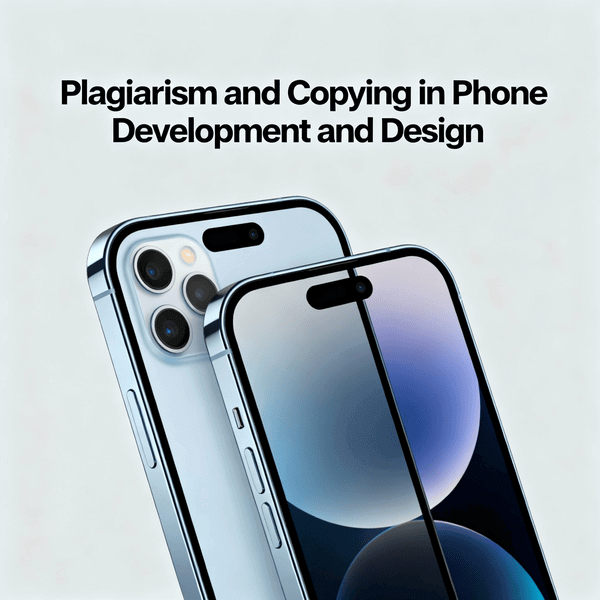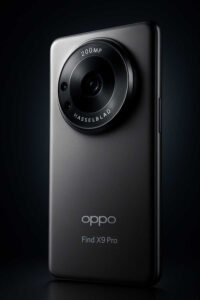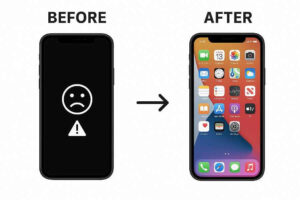
In the hypercompetitive smartphone market, design isn’t just aesthetics — it’s identity. When a user sees a sleek metal frame, a camera island, or a dynamic island display cutout, they often associate it with a brand. Yet, the line between inspiration and imitation has become increasingly blurred. From industrial design blueprints to user interface layouts, copying in phone development has become both a creative shortcut and a legal battleground.
This article explores how brands borrow (or outright lift) ideas from one another, how intellectual property laws respond, and what it means for consumers who buy these devices. If you’re researching or writing on this topic, tools like a citation generator can help ensure your sources are properly credited — something tech companies often forget to do when it comes to design inspiration.
Table of Contents
How Manufacturers Copy Phone Design
The smartphone industry thrives on competition, and also imitation. When one manufacturer unveils a groundbreaking design, others quickly follow. This tendency raises questions about originality and ethics in product creation.
Industrial design infringement smartphone
When Apple introduced the iPhone, it redefined what a smartphone should look like. Rounded corners, minimal bezels, and smooth aluminum edges became a global standard. However, that standardization also encouraged imitation. Many Android manufacturers began producing devices that looked suspiciously similar — sometimes indistinguishable at first glance.
This industrial design infringement smartphone trend isn’t new. Samsung and Apple’s decade-long legal war over design and functionality set a precedent that continues to shape the industry. Courts in multiple countries have ruled on aspects like icon arrangement, bezel thickness, and even the way a device unlocks.
In 2025, similar disputes continue to emerge. As soon as a new flagship phone launches, designers at rival firms dissect every visible feature. The visual similarity phone design test used by courts and IP examiners helps determine whether a product’s design constitutes plagiarism or fair use.
The Art (and Risk) of Phone Interface Copying
The outer shell of a smartphone isn’t the only part that gets copied — its digital soul does, too. Software design, user interface (UI), and visual experience have become the next battleground in design plagiarism.
UI skin copying Android manufacturers
Hardware is just one layer of smartphone design. The interface (what users see on their screens) can also fall victim to plagiarism. UI skin copying Android manufacturers is particularly rampant because Android allows deep customization.
Brands such as Xiaomi, Oppo, and Realme have often been accused of lifting design cues from iOS, especially in their iconography, notification layout, and animations. Some even replicate iOS-style control centers and app-switching gestures. This has fueled debates on UI plagiarism phones, where companies blur the lines between user familiarity and design theft.
A notable case was Xiaomi’s early MIUI versions, which visually mimicked iOS so closely that users jokingly called them “iPhone software for Android.” Today, while MIUI (now evolved into HyperOS) and ColorOS from Oppo have matured, traces of Apple’s aesthetic still remain.
When the Line Between Inspiration and Phone Design Copying Blurs

Design similarities often spark innovation debates, but when does resemblance become theft? This question drives lawsuits and policy changes across the global smartphone industry.
Patent infringement smartphone design
The distinction between copying and inspiration often depends on patent infringement smartphone design rulings. Companies protect everything, from the curve of a corner to the placement of camera lenses, under design patents.
For example, Apple’s lawsuits against Samsung focused on specific design patents like the “rectangular device with rounded corners” and “grid of colorful icons.” Though these may seem basic, they shape how we perceive modern devices.
Meanwhile, emerging brands sometimes argue that design trends evolve naturally, and that similarities arise because of shared functionality needs. After all, almost every smartphone today is a rectangular touchscreen slab. Yet, experts argue that subtle differences (materials, lighting effects, and the shape of buttons) still make originality possible.
The design law smartphone frameworks differ globally, creating a complex landscape. In China, for instance, design patents are easier to obtain but harder to enforce, allowing rapid proliferation of OEM knockoff smartphones that blur legal boundaries.
Inside the Replica Phone Market
Behind every luxury flagship design, there’s a shadow industry waiting to imitate it. This parallel ecosystem thrives on consumers’ desire for prestige at lower costs.
Phone chassis copy
The replica phone market thrives on the global fascination with premium flagships. Manufacturers often phone chassis copy high-end designs, producing models that visually mirror the original but use cheaper materials and outdated hardware.
A replica phone teardown often reveals shocking details — plastic components replacing aluminum, low-grade displays mimicking OLED panels, and outdated chipsets disguised under shiny exteriors. These replica smartphones sometimes even run Android skinned to look like iOS, tricking unsuspecting users.
Such smartphone clone devices raise concerns not only about intellectual property but also about safety and security. Without proper certifications or software support, knockoff phones can pose data privacy risks and performance issues.
Design Plagiarism Cases in Phones
The smartphone industry has a long history of brands walking a fine line between imitation and originality. Each new release brings another wave of comparison and controversy.
Design plagiarism cases phones
Recent design plagiarism cases phones include tensions between Apple and Chinese OEMs over the iPhone 17’s camera module, which several brands quickly adopted in their new releases. The Oppo Reno, known for its stylish and futuristic aesthetics, has also faced imitation. Meanwhile, rumors swirl about Xiaomi 17’s resemblance to next-generation iPhones, continuing a long-standing pattern of how manufacturers copy phone design.
These disputes often end in quiet settlements, licensing agreements, or rebranding efforts. However, each case fuels the larger debate: Is phone design evolving toward convergence or stagnation through imitation?
Consumers, too, are complicit. The demand for high-end looks at low prices sustains the replica smartphones and fake iPhone markets. Manufacturers exploit this psychology by offering familiar-looking devices that promise the same prestige without the price tag.
The Legal Maze Around Mobile Design Copyright
The enforcement of mobile design copyright laws remains inconsistent worldwide. In the U.S. and EU, IP offices require detailed visual documentation of design elements. But in regions where enforcement is weak, brands often reuse designs with minimal legal consequences.
Even legitimate OEM knockoff smartphones produced by contract manufacturers can unintentionally infringe on another brand’s intellectual property if design guidelines are not clearly established. This legal ambiguity discourages smaller startups from innovating for fear of being sued or copied themselves.
The design law smartphone ecosystem, therefore, struggles to balance innovation protection with market accessibility. While IP rights safeguard creativity, they can also stifle design diversity if overly broad or aggressively enforced.
The Real Cost of Copying
Every UI plagiarism phones incident chips away at the industry’s motivation to innovate. Why invest millions in R&D when competitors can reverse-engineer or cosmetically replicate your design within months?
The rise of replica smartphones and smartphone clone production facilities underscores this dilemma. Companies that prioritize originality, like Apple, Nothing, and Google, must compete not just with rival innovations but with their own shadows in the gray market.
This ripple effect limits experimentation. A company hesitates to launch bold designs, fearing backlash or imitation. Meanwhile, consumers get a market flooded with lookalike slabs that only differ in camera megapixels or software filters.
From Plagiarism and Copying to Creativity: The Future of Design Ethics
The future of smartphone design depends on transparency, accountability, and ethics. As more consumers recognize the nuances of originality, brands may find value in differentiation over imitation.
Manufacturers that proudly showcase unique design elements, whether it’s the Oppo Reno’s camera innovation or Xiaomi 17’s experimental materials, set examples for others to follow. Stronger design law smartphone enforcement, improved IP literacy, and collaboration between legal and design teams could pave the way toward fairer innovation.
Copying will never fully disappear — it’s a byproduct of inspiration and competition. But industries evolve when creativity is rewarded, not replicated.







